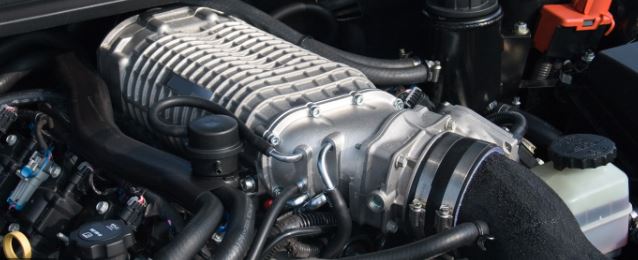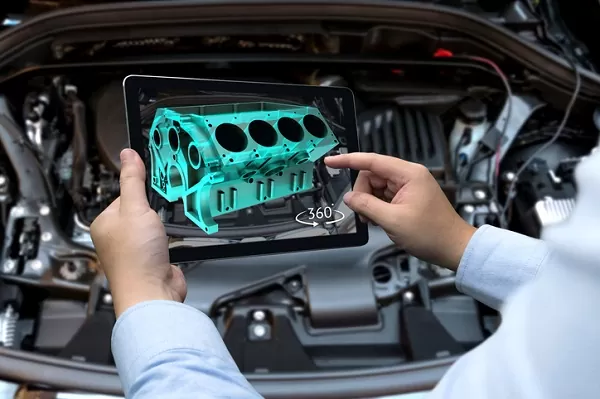Have you ever been driving down the street and heard a weird whining sound coming from the car in front of you? Chances are, that car has a supercharger. What is a supercharger, and why does it make that noise? In this blog post, we will discuss the basics of how a supercharger works and what can cause it to whine.
Before we go into why it makes a whining noise, let’s us remind ourselves of what superchargers are and how they work.
What Are Superchargers?
A supercharger is a device that increases the amount of air entering the engine. This gives the engine more oxygen to work with, which in turn allows it to produce more power.
Superchargers are used in cars to improve performance and give the driver more power under acceleration. They can also help improve fuel economy by making the car run more efficiently. Superchargers are usually mounted on top of the engine, and they can be either Roots-type or centrifugal-type.
Centrifugal-type superchargers are generally considered to be superior because they are more efficient and generate less heat than Roots-type superchargers. However, centrifugal-type superchargers require an electrical connection to function, while Roots-type superchargers do not. Superchargers can be either belt-driven or gear-driven.
Belt-driven superchargers are more common because they are less expensive to manufacture and easier to maintain. Gear-driven superchargers are generally only found on high-performance cars because they are more expensive and require more maintenance than belt-driven superchargers. Superchargers are a popular way to improve the performance of cars, and they can make driving more fun and exciting.
How Do Supercharger Systems Work?
When you step on the accelerator, the throttle valve opens up and lets in more air. This increased airflow slams into the engine, which causes it to spin faster. The spinning of the engine turns a shaft that is connected to a generator, which creates an electrical current. This current flows through cables that run to the supercharger, which then speeds up its turbines.
The turbine blades compress the air going into the engine, causing more fuel to be burned. This increases how much power your car can produce and gives it a boost in acceleration. When you let off of the accelerator, the reverse happens -the turbines slow down and eventually stop- and so does the compressor; this allows for normal aspiration again (drawing air in from outside the engine).
Whats The Difference Between Turbo and Supercharged Systems? Which is Better?
Turbochargers and superchargers are both forced induction systems used to increase the power output of an engine by forcing more air into the combustion chamber. However, there are some key differences between the two.
A turbocharger is powered by exhaust gases from the engine, while a supercharger is powered by a belt connected to the crankshaft. This means that a turbocharger doesn’t put any extra strain on the engine, while a supercharger does.
Turbochargers are also more efficient than superchargers, because they don’t have to work as hard to force air into the engine. And since they’re powered by exhaust gases, they actually help to cool down the engine too.
Superchargers are more common than turbochargers, because they’re easier to install and they don’t require any special tuning or maintenance. However, turbochargers can provide more power for a given engine size, so they’re becoming increasingly popular in performance cars.
So, which is better? It really depends on your needs. If you’re looking for maximum power, then a turbocharger is the way to go. But if you’re just looking for a little extra power without any extra hassle, then a supercharger is probably the better choice.
Why Do Superchargers Whine?
The whine of a supercharger is iconic in the world of muscle cars. It’s one of those things that just gets your blood pumping. But have you ever wondered why superchargers make that distinct sound?
There are actually a few reasons why superchargers tend to whine. One reason is because of the way they work. Superchargers are driven by a belt connected to the engine crankshaft. This means that they spin at a high rate of speed, which can create a whining noise.
Another reason for the characteristic supercharger whine is because of the way air moves through them. When air is forced into the engine under high pressure, it can create turbulence cause the supercharger to whine.
What Type Of Supercharger Produces The Most Noise?
Prochargers are known to be the loudest centrifugal available on the market and are often considered “obnoxiously loud” , but that comes down to personal taste and preference. Some people love a loud supercharger (Me included! )
Can You Make Your Supercharger Whine Noise Louder?
The most effective way to increase blowers whining noise is by removing the standard air intake and installing a cold-air kit of some sort.
Another way you can make the whine a bit louder is to remove the sound insulation under the hood of your car ( if it has it from the factory)
This will allow the supercharger noise to travel through the metal of the hood and be amplified. You can remove the insulation yourself with a few tools, or you can take it to a mechanic and have them do it for you. Either way, once the insulation is removed, you’ll be able to enjoy the increased sound of your superchargers whine.
One other popular way to make power ( and noise ) is to change the stock pulleys out for aftermarket parts.
When you change a pulley on your car’s supercharger, you are increasing the speed of the compressor. This will increase the amount of air that is forced into the engine, which in turn will create more power. If you are looking to make more power and noise with your supercharger, changing the pulley is a great way to do it.
There are aftermarket pulleys available for most superchargers, so finding one that fits your needs should be easy. Be sure to consult with a professional before making any changes to your car’s supercharger, as improper installation can cause damage. Changing a pulley can be a great way to improve your car’s performance, but it is important to do it safely and correctly.
Go Home









